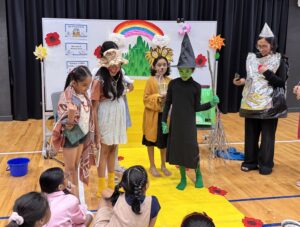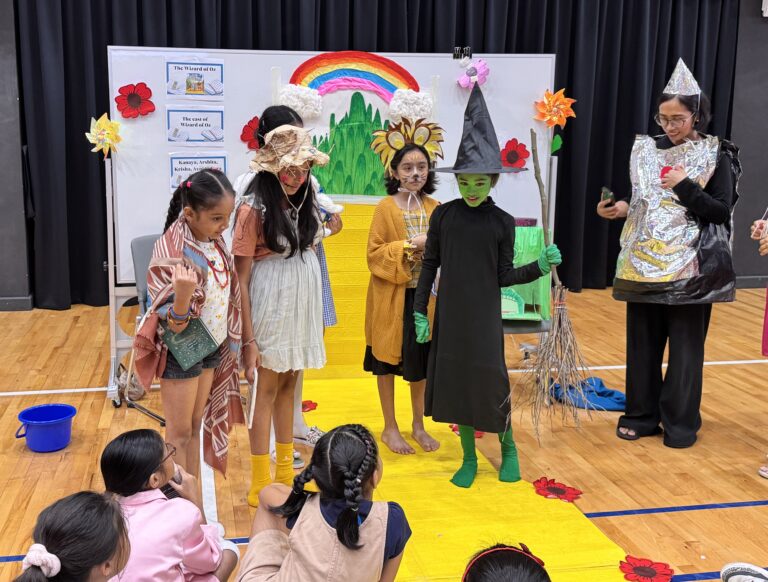From fostering cross-cultural understanding to opening up new avenues for communication, having a command of at least one or more foreign languages, outside your native language, is more important than ever.
Introducing a foreign language to your children at a young age brings a remarkable array of cognitive and social benefits. These early experiences can shape their development in profound and positive ways, laying a strong foundation for future learning and global engagement.
At One World International School (OWIS), we embrace the richness of our multicultural environment and actively support multilingualism across our Nanyang and Punggol campuses, and going forward at our Newton Campus as well. With foreign language options like Mandarin, French, Japanese, and Spanish, we believe that fostering a love for languages from a young age is a cornerstone of international school education.
Benefits of Learning a Foreign Language
Cognitive Advantages
One of the benefits of learning a foreign language at an early age is the way it primes the brain for enhanced learning in other areas. In fact, the very structure of a language shapes how we perceive the world; as a BBC Future article highlighted, different languages can even influence our perception of time.
By enhancing cognitive flexibility, multilingual children often find it easier to switch between tasks and approach thinking in more nuanced ways. Furthermore, the mental agility required to understand and use a new language significantly strengthens problem-solving skills and boosts overall cognitive abilities.
Social Advantages
On a social level, learning a foreign language also fosters increased intercultural understanding by enabling children to connect with individuals from diverse backgrounds and appreciate different perspectives. A study published in PubMed Central indicated that even minor exposure to a multilingual environment can make students more likely to understand people from other perspectives – a crucial soft skill that translates well into broader society and the future workplace.
Moreover, foreign language capabilities can open up exciting study and career opportunities in an increasingly globalised future.
Cultural Advantages
Being able to communicate in more than one language allows individuals to engage with different cultures on a deeper level, appreciate their nuances, and gain a broader understanding of the world. Cultural nuances can often be lost in translation. While finding bridging words can aid some understanding, learning about cultural contexts in their native languages retains a closer and more accurate interpretation.
Learning a foreign language opens doors to literature, music, and traditions that might otherwise remain inaccessible, fostering a lifelong appreciation for cultural diversity.
The Process of Learning A Foreign Language in Children
Children typically go through several stages when learning a foreign language:
- The Silent Period: Initially, your child might seem to be absorbing everything like a sponge, listening intently but not speaking much. Even if they seem quiet, this is a crucial phase of internalising the new sounds and rhythms of the language.
- Early Production: Soon, you might start to hear them start to use single words and short, memorised phrases. These might not always be grammatically perfect, but this is a significant step in actively using the language.
- Speech Emergence: As their confidence grows, your children will begin to form longer, albeit sometimes grammatically simpler, sentences. They will try to express more complex thoughts, and their understanding will also expand—slowly, but surely.
- Intermediate Fluency: At this stage, your child will be able to engage in more extended conversations and express their ideas with greater clarity. While occasional mistakes are still normal, their fluency will improve noticeably.
- Advanced Fluency: Eventually, with continued exposure and practice, they can reach a level where their proficiency is close to that of a native speaker, with a rich vocabulary and a strong grasp of grammar.
These stages highlight that language acquisition in preschool and beyond is a developmental journey, and the pace at which children progress can be influenced by various factors.
Here are some of the key factors that can influence language learning and development in children:
- Consistent Exposure: Think of it like watering a plant—regular and meaningful exposure to the foreign language, whether through lessons, conversations, or engaging with fun stories and songs, helps their language skills grow stronger.
- Making it Routine: Just like brushing their teeth, consistent practice makes a big difference. Even short, regular bursts of language use can help new words and grammar stick.
- Keeping it Fun and Engaging: Children learn best when they are motivated! Making language learning enjoyable through games, activities, and connecting it to their interests will fuel their enthusiasm and accelerate their progress.
Code-Switching
Now, you might also notice your child occasionally switching between their first language and the foreign language within the same sentence or conversation.
This is known as code-switching. For parents of students in an international school setting, where multilingualism is often the norm, it is natural to wonder if anything should be done about this. In most cases, code-switching is a normal and even beneficial part of learning a foreign language. It indicates that your child is drawing on their full linguistic repertoire to communicate effectively. Our advice is generally to be patient and supportive.
View code-switching not as a hindrance but as a sign of their developing linguistic flexibility and their brain actively making connections between languages. Unless your child is consistently avoiding using the target language altogether, you should allow this natural process to unfold as they become more confident and proficient.
How to Help a Child Learn A Foreign Language More Effectively
Early exposure plays a pivotal role in a child’s journey of language acquisition in preschool and beyond. Introducing a foreign language early on can make the process more intuitive and can lead to greater fluency and a more natural accent.
Here are some practical strategies parents can use to create a language-rich environment for their children from a young age:
- Immerse Through Play: Use games, songs, and rhymes in the foreign language. Young children learn best through play, so make it interactive and enjoyable.
- Read Together: Introduce simple picture books and stories in the native language. Even if you do not speak the language fluently yourself, you can explore the pictures and try to pronounce basic words together.
- Use Multimedia: Incorporate age-appropriate videos, cartoons, and music in the foreign language into their routine. Visual and auditory aids can make learning more engaging.
- Label Objects: Put simple labels in the foreign language on household items. This helps children associate words with everyday objects.
- Connect with Culture: Explore aspects of the culture associated with the language through food, celebrations, and stories.
- Encourage Interaction: If possible, connect with native speakers or other families who are learning the language. Even short conversations can be beneficial.
Remember, the goal is to make learning a foreign language a fun and engaging experience at home. By nurturing their natural curiosity and making it enjoyable, you can help your children develop a lifelong spirit of inquiry and a love for learning about the world around them.
The Role of Education
Education programmes play a vital role in nurturing children’s language development. Creating a welcoming and inclusive environment is paramount, especially in an international school setting, where students come with diverse linguistic backgrounds. A supportive educational framework encourages all students to embrace language learning and celebrate their unique abilities.
At OWIS, we offer Mandarin, French, Japanese, and Spanish as foreign languages across different grade levels, providing students with opportunities to explore and develop proficiency in multiple languages within the framework of our curriculum, including elements of the IB curriculum in Singapore.
Embracing a Multilingual Future at OWIS

Raising children with knowledge of foreign languages equips them with invaluable skills for today’s interconnected world. We encourage parents to embrace this enriching journey of multi-language learning alongside their children and to celebrate the linguistic diversity that makes our world so vibrant.
If you are keen to learn more about multiculturalism in education and the diverse language programmes offered at OWIS, we warmly invite you to contact our admissions team or schedule a campus tour. Discover how we nurture a love for languages and empower our students to become confident global communicators.
Disclaimer: Foreign language availability may vary across key stages and campuses. Please check with our Admissions Counsellor for the latest information.










